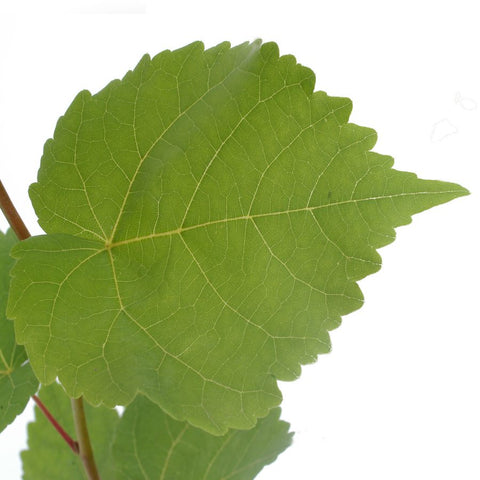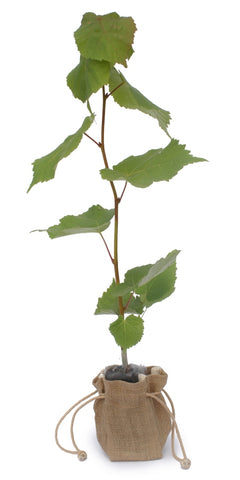Small Leaved Lime Tree Facts and Information
Small Leaved Lime Tree Facts and Information
- Latin Name: Tilia cordata
- Native Words: Old Irish (), Scots Gaelic (), Old English (), Welsh (), Eastern Celtic ()
- Ogham Sign:
- Height When Mature: 25–30m
- Height After 10 Years: 5m

Small Leaved Lime Botanical Description
There are three native lime trees in Britain. Tilia cordata is the Small Leaved Lime. The Common Lime (Tilia vulgaris), commonly seen across the landscape, is a hybrid of Small Leaved Lime and Large Leaved Lime (Tilia platyphyllos).
Small Leaved Lime has striking crimson buds in winter. The heart-shaped leaves are glossy green above, pale yellow underneath, and typically 4–7cm long. White flowers appear in July, clustered above the foliage. The small round seed pods fall still attached to a stalk, a key identifier. Uniquely among limes, the fruit of the Small Leaved Lime stands above the stem rather than hanging below.
The tree has a distinctive profile with upward-arching branches that turn downwards sharply. Its smooth grey bark becomes fissured with age.
Natural History and Ancient Wisdom
Once the most common tree in the British Isles, Small Leaved Lime is now rare, found only as scattered specimens across lowland England. It lost ground to oak due to two factors: preference for drier, cleared soils, and less protection from grazing animals.
The Canterbury Lime Tree, a cricketing icon, stood for centuries at the St. Lawrence Ground. After its death in 2005, a new tree was ceremoniously planted.
Limewood is prized for its stability and softness, making it ideal for musical instruments and intricate carvings. The famed Grinling Gibbons used it extensively during the 17th century.

Lime Place Names in the UK
- Lyndhurst (Hampshire) – "lime wood"
- Lympsham (Somerset) – "pool where lime trees grew"
- Limpole (Northamptonshire) – "pool where lime trees grew"
- Lindridge (Worcestershire) – "lime ridge"
- Great Limber and Little Limber – villages named for "lime tree hill"
Wildlife Rating
The flowers produce a rich, sweet nectar attractive to bees and butterflies. Aphids thrive on the foliage, producing sticky honeydew. Leaves are also a primary food source for lime hawk-moth caterpillars.
Good Points / Bad Points
- Attractive shape and slow growth make it ideal for medium to large gardens.
- Responds well to pollarding — ideal for formal avenues.
- Susceptible to aphid infestation; honeydew may fall on parked cars beneath.
Want to Buy a Native Small Leaved Lime Tree?
Tree2mydoor is an award-winning tree gifts company. We've specialised in sending trees as gifts for over 20 years. Explore our Ancient Wisdom Tree collection — perfect for birthdays, weddings, or remembrance gifts. Each tree tells a story and adds long-lasting beauty to any space.